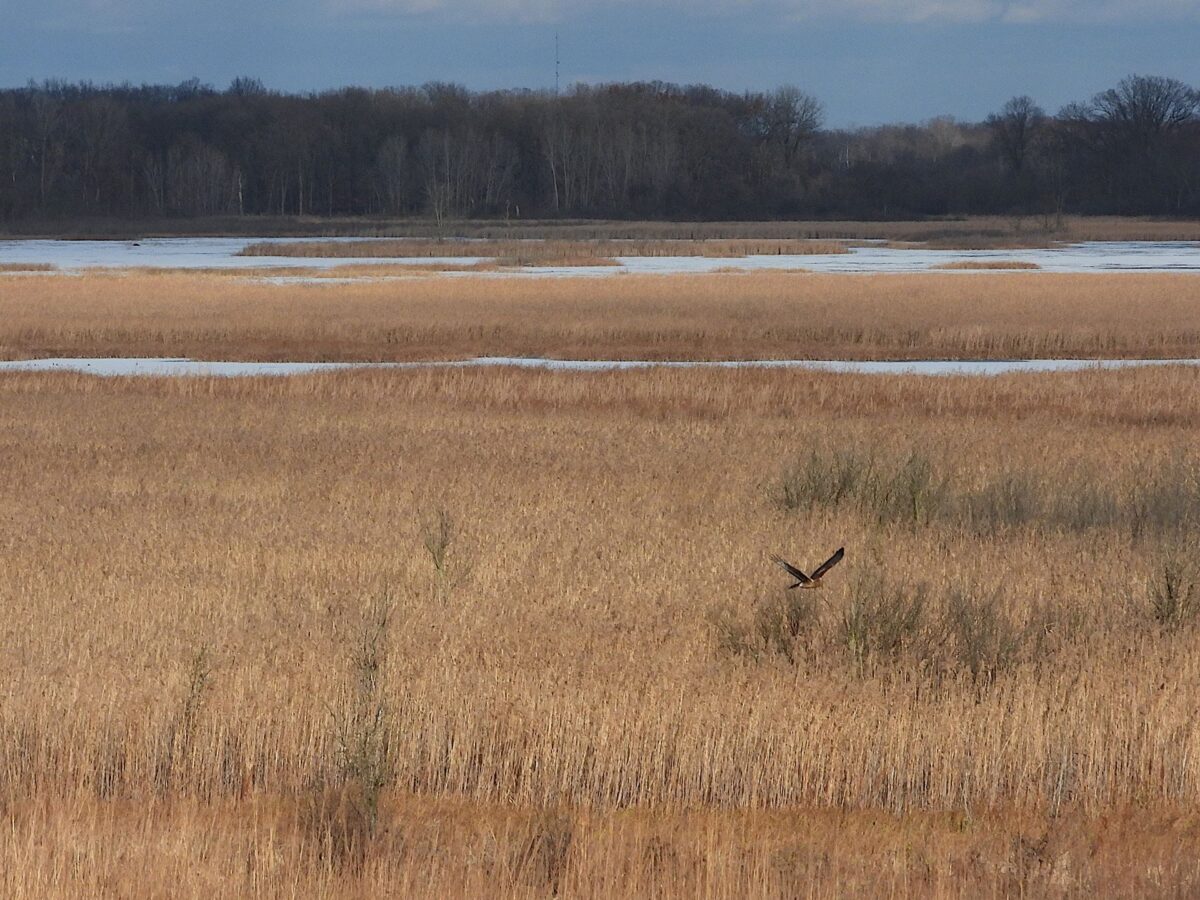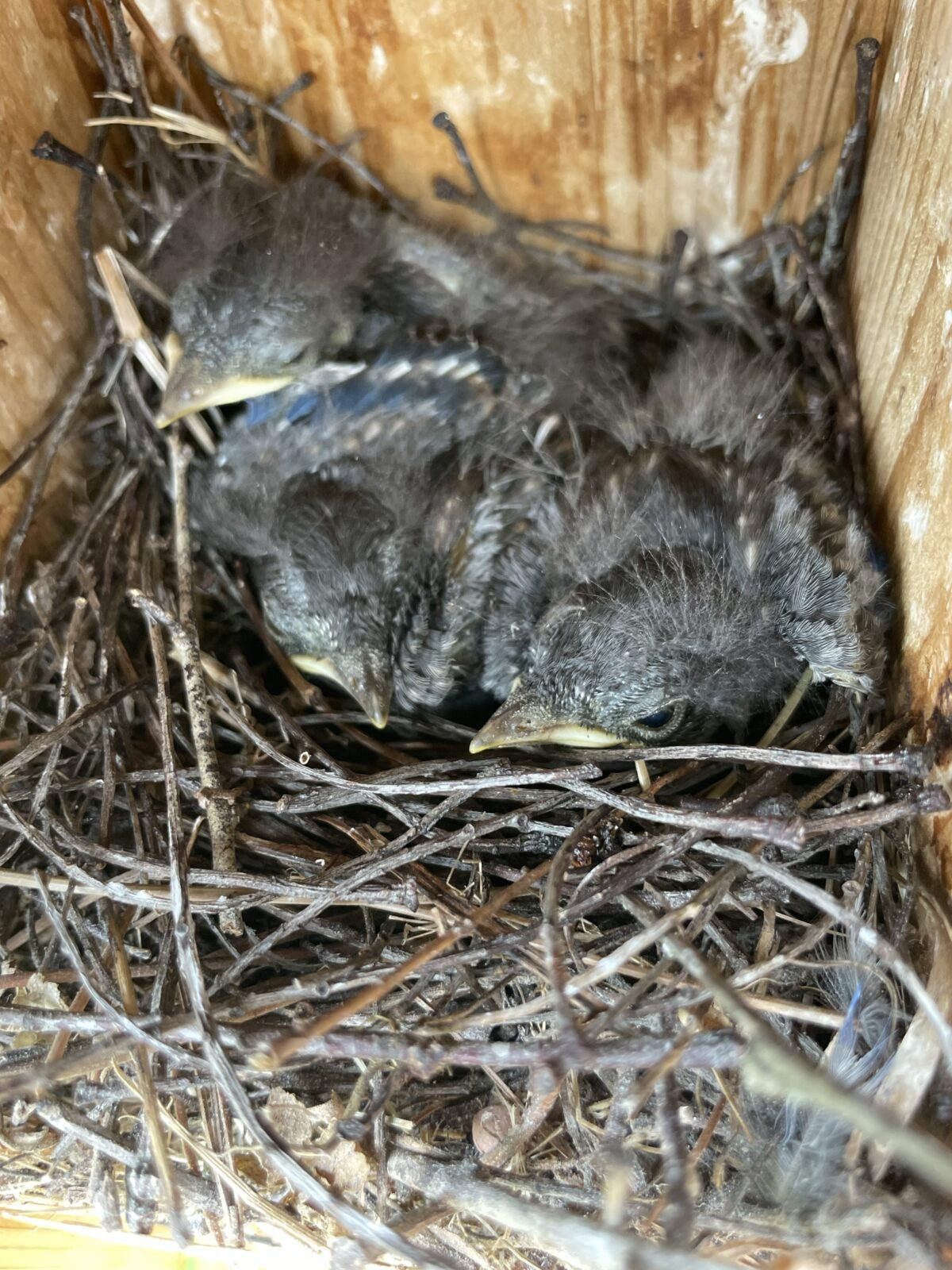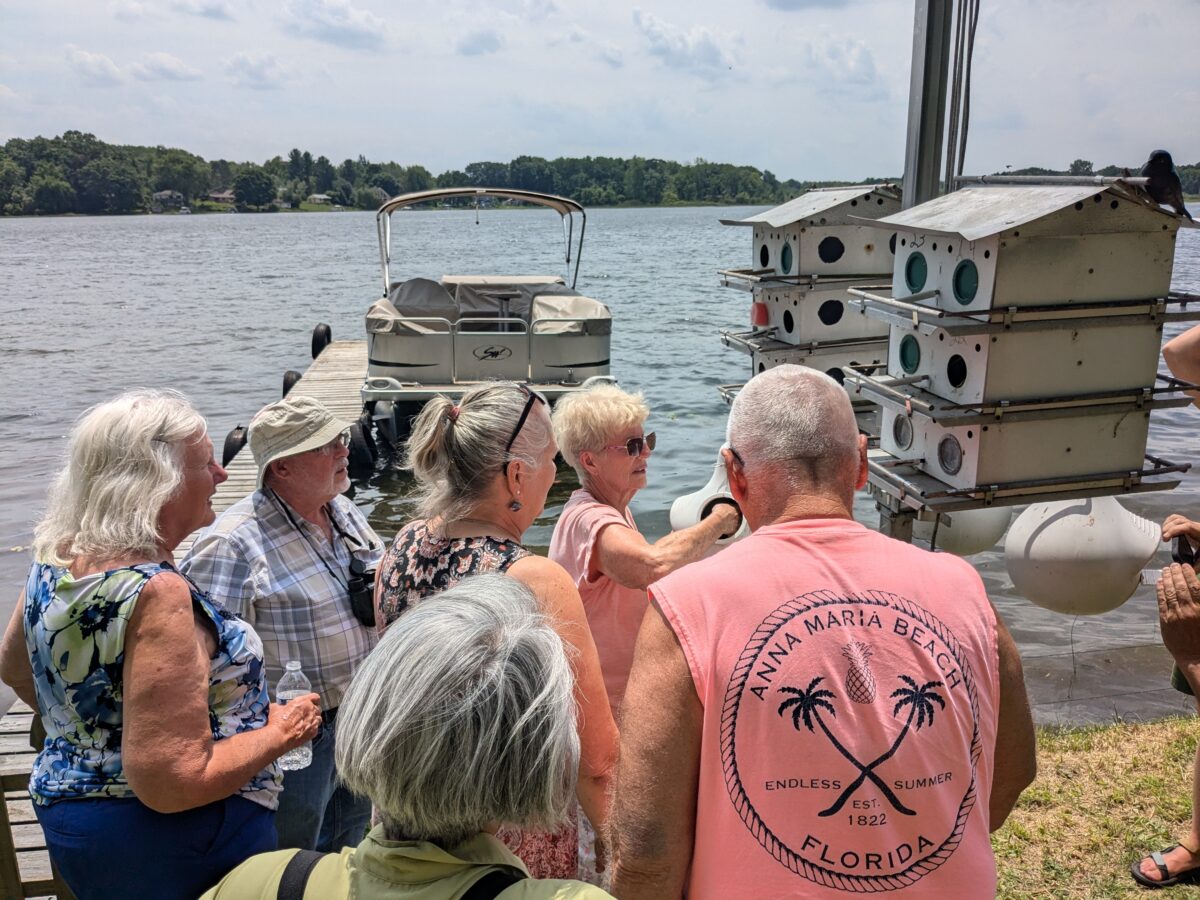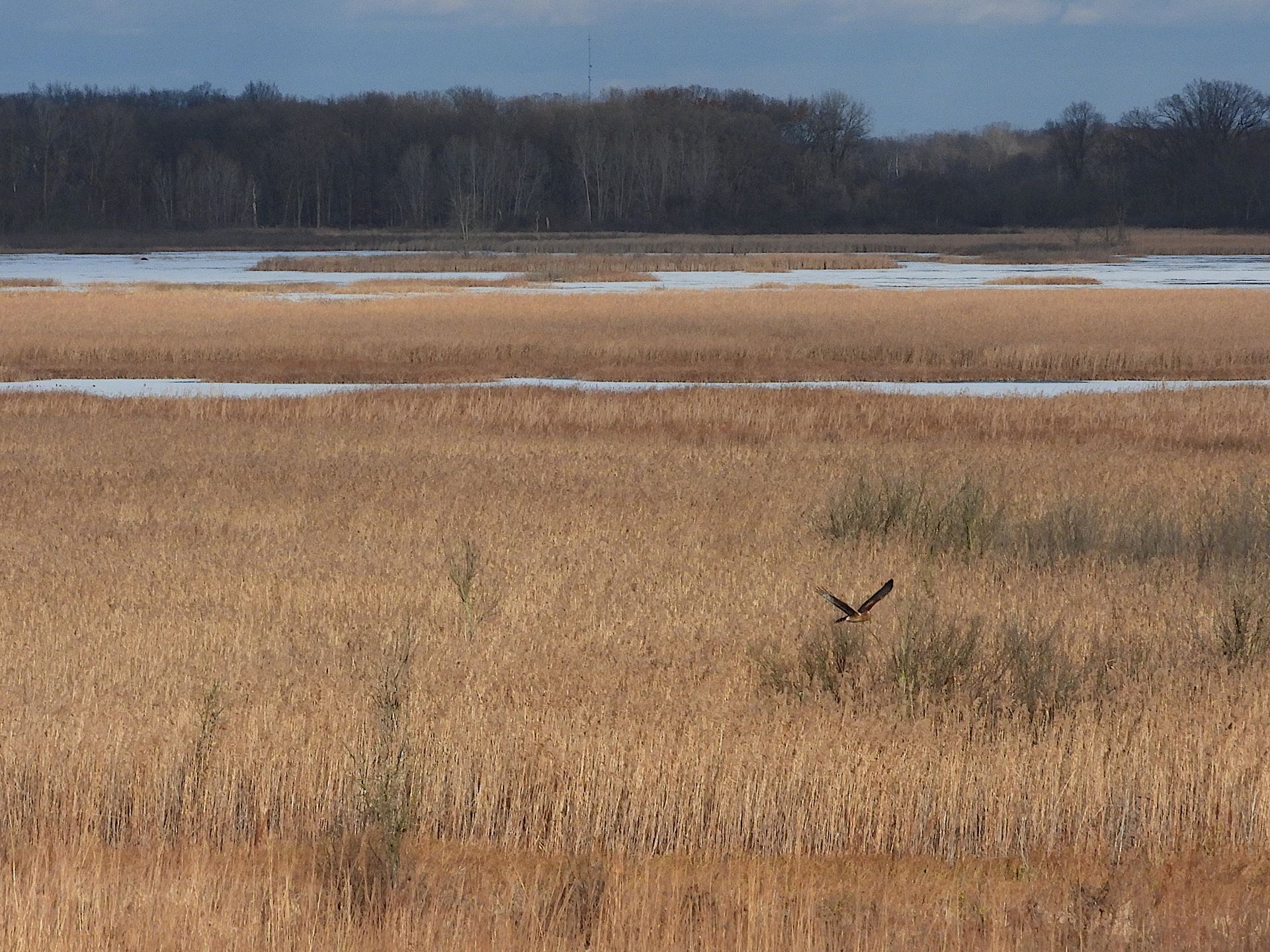Conservation Manager Chad Machinski, M.S., manages the stewardship of MA’s sanctuaries and engaging with our dedicated volunteers ever since. To help you stay connected with the work being done, he will be presenting regular online updates about activities going on at them: birds seen or heard, conservation work, improvements, interesting plants, and more.
The marsh is quiet, and Haehnle’s cold.
Truth be told, I’ve been waiting to use that line for a while (it’s an adaptation of a Townes Van Zandt song), but I wasn’t sure if the Sandhill Cranes and the Canada Geese would ever not be heard at Phyllis Haehnle Memorial Sanctuary this year or that it would even be cold. December 11th proved me wrong as the cold wind bit at my hands while eating lunch with Haehnle Committee Chair Steve Jerant, overlooking a frozen and quiet Mud Lake Marsh. While I was chilled to my core the entire day, it was a good end to the year as we sowed seeds in our savanna restoration area and overviewed the aftermath of the timber sale that saw a handful of black walnuts come down to make way for the oak savanna restoration.

A Northern Harrier at Phyllis Haehnle Memorial Sanctuary. Photo by Don Henise
I’m looking back at this year and viewing it as a very successful one. Across our sanctuaries, we had 1,546 volunteer hours focused on invasive plant removal, nest box monitoring, and general upkeep. Across our five sanctuaries that have active nest box monitoring, we fledged 106 Eastern Bluebirds, three Black-capped Chickadees, 133 Tree Swallows, three American Kestrels, 61 House Wrens, and 12 Wood Ducks. We had significant contracting work done composed of three prescribed burns to maintain our grasslands, necessary tree removals and brush hogging, and infrastructure improvements to the farmhouse at Otis Farm Bird Sanctuary.

Photo of Eastern Bluebird chicks, approximately 1 week before fledging. This was the last of three broods this box supported. Photo by Derek Haroldson
But our conservation work extended beyond the sanctuaries as well. 2024 saw the resurgence of our Chimney Swift and Purple Martin community science programs. We had 251 roost surveys submitted for Chimney Swifts, and 49 nests were reported across the state. We have gotten increased engagement in the Upper Peninsula regarding Chimney Swifts, which has largely been a bit of a black hole of information in the past. A nest reporting form for Purple Martin landlords in Michigan was also created to better capture information that landlords are already collecting. In its first year, we had 34 landlords submit nest summaries, which gave us a total of 564 nesting pairs that produced 2,009 fledglings. Because this is its first year, I believe that the number of submissions will only increase over time, resulting in a better glimpse into how Purple Martins are doing in the state.

Connie Spotts pulling out a Purple Martin chick to show to party attendees. Photo by Chad Machinski
Looking ahead to 2025, I see all the numbers I previously reported going up, but only with your help. Whether you are a volunteer out working with me, a member, or a contributor to our community science programs, every bit that you do helps. Every bit helps Michigan Audubon achieve its mission of connecting birds and people for the benefit of both through conservation, education, and research efforts in the state of Michigan.
Thank you for all you’ve done, and happy holidays.
To learn more about Michigan Audubon sanctuaries, visit michiganaudubon.org/conservation/bird-sanctuaries. If you want to volunteer at a Michigan Audubon sanctuary, please complete the Sanctuary Volunteer Interest Form.

Chad Machinski, MS
Conservation Manager
While Chad’s first love is botany, he doesn’t deny the intertwining nature of birds, plants, insects, and all other organisms we share the world with. His passion for the natural world began in his undergraduate time at the University of Michigan, taking several different forms along the way. His graduate studies at the University of Michigan allowed him to more closely examine the natural communities of Michigan and further understand the complex nature of ecosystems. His work as a Nichols Arboretum Caretaker while in school further enabled him to be directly involved in conservation work as he led workdays removing invasive plant species, performed trail maintenance, and guided tours. Chad can usually be found out in a park in a few ways: binoculars glued to his face, hunched over looking at plants, or flipping logs looking for snakes and salamanders.

